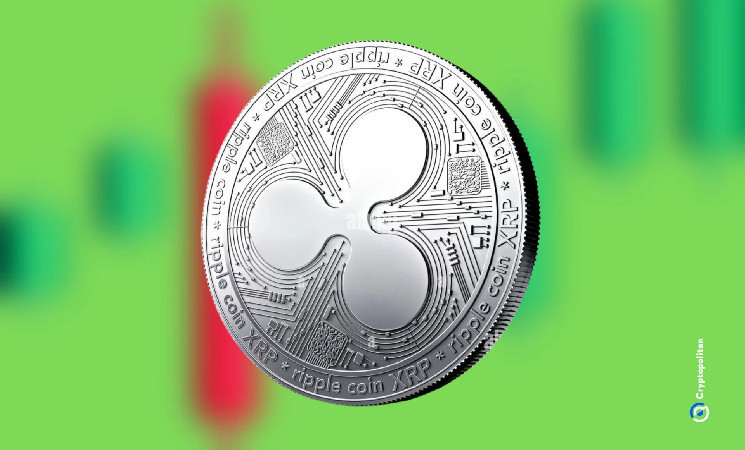Ripple’s XRP has shifted to Binance, where whales have been making deposits since 2021. XRP is still a long-term bet for rapid appreciation, raising new hopes with each bull cycle.
XPR whales prefer Binance for their deposits. Since 2021, reserves on Binance increased, despite the pruning of liquidity pools and pairs. Whales started more active deposits three years ago, and Binance remains the preferred market, with significant XRP reserves.
More than 14% of all XRP trading is concentrated in the two available Binance trading pairs, making the exchange a suitable hub to bet on XRP volatility. According to CryptoQuant, the deposits accelerated in the last months of 2021, and whales did not move away their XRP, keeping the assets ready for trading.
One of the reasons for the deposits is that Binance still supports XRP staking, despite removing some of the trading activities to avoid US regulatory limitations. After XRP relaunched on Binance, those whales still kept their balances on the exchange and did not move to other markets.
At the same time, other whales kept moving coins to smaller exchanges. The most popular markets for anonymous whales were Bitso, Bitstamp, and Bybit. After XRP rallied, one whale sent more than $11M in XRP to the Bitso exchange.
Binance remains a large-scale XRP holder
XRP was relisted once again in the summer of 2023, though Binance shifted the available markets. Since May 2024, Binance Futures discontinued support for XRP markets.
Binance carries XRP in a total of eight wallets, becoming one of the largest holders after Ripple itself. The Binance 4 wallet has the largest holdings, at 1,477,168,713 XRP, valued at more than $805M.
In total, Binance’s wallets contain 3,126,845,450 XRP, valued at more than $1.7B. The amount is comparatively small to the 99.99B total supply of XRP. However, the token is also locked or held for the long term, limiting the circulating supply to about 50B.
Binance whales are thus well-positioned to make use of XRP rallies, as the asset tries to reclaim a higher range. Yet XRP skeptics also believe some whales may exert selling pressure to keep XRP artificially low.
XRP lawsuit may end after US SEC misses appeal date
Attention is shifting back to XRP, after the deadline for appealing passed, and the US Securities and Exchange Commission did not file to extend the lawsuit. This leaves Ripple with sufficient proof that XRP is not an unregistered security, opening the doors to renewed trading.
The big question, however, is whether XRP will be a good investment with either utility or at least speculative potential. One of the worries is that XRP has drifted sideways for years without breaking out, and has not gone far above $1 since 2017.
In addition to the news about the lawsuit, XRP gained attention at the Ripple Swell conference. Ripple stated its potential path of development, aiming to include stablecoins, payments, tokenization, and safe custody.
In 2024, Ripple still catches up with some of the developments in DeFi and retail crypto usage, while still aiming to serve banks. XRP itself may not be necessary in some use cases of Ripple’s network, so global adoption will not translate into global demand for XRP. Additionally, Ripple has supplied its partners with XRP tokens, so banks and payment institutions will not buy XRP on the open market.
In the past two years, XRP has ranged between $0.40 and $0.68, with breakouts quickly erased through selling. XRP has waited long for a breakout from those levels, but not even favorable news about the lawsuit has helped. Irrational and overly optimistic scenarios still abound on social media, seeing XRP rally to $10.
XRP had a small-scale recovery, with open interest returning above $590M, the highest level since April. XRP trading volumes remain between $1.2B and $1.5B, still under their 2018 and 2021 peak levels above $5B in 24 hours.
Read the full article here

